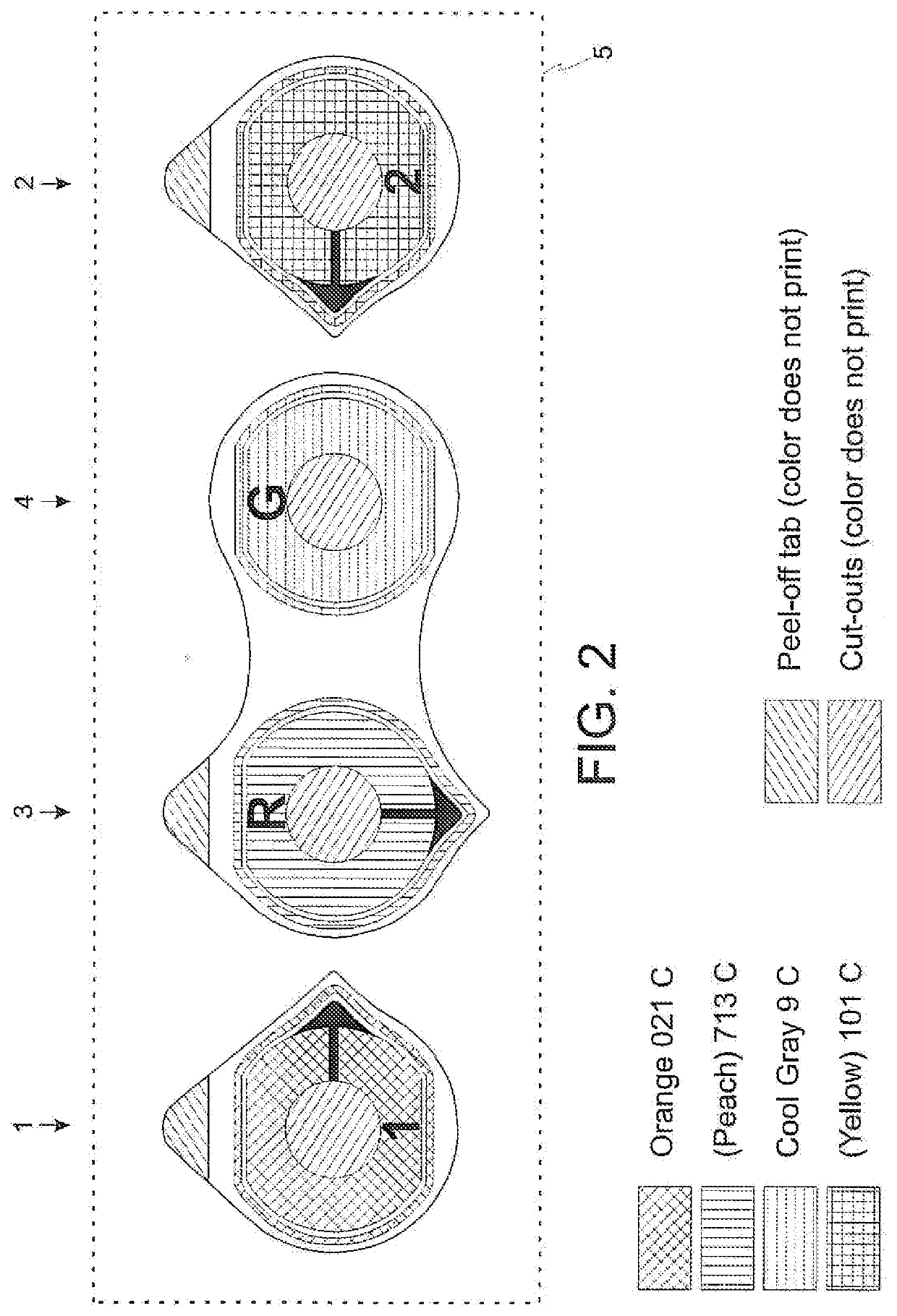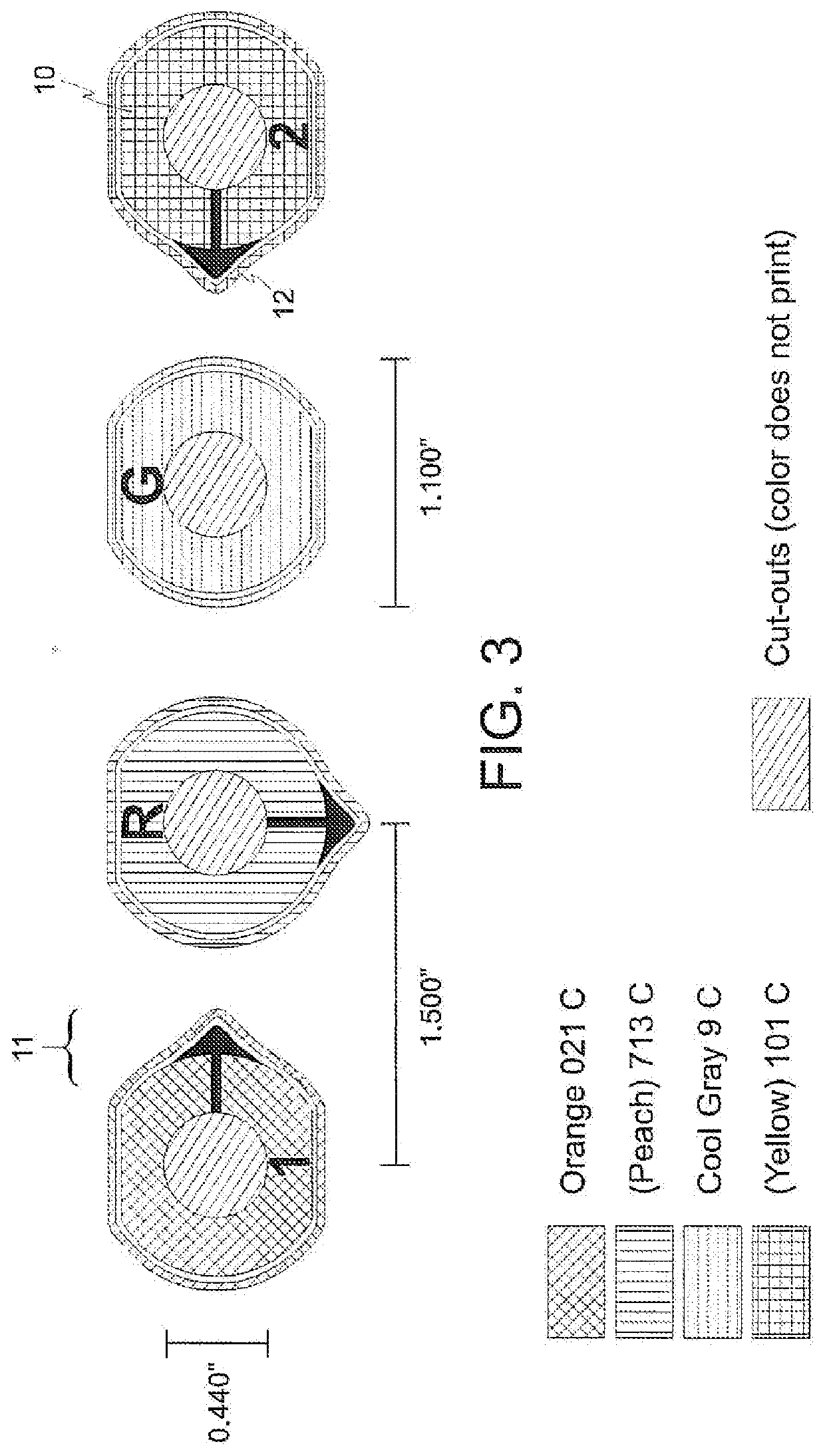Physiological Recording Device with Novel and Proprietary Connector
a recording device and connector technology, applied in the field of physiological recording devices with, can solve the problems of endangerment of patients, confusion of electrodes on the part of physicians or technicians applying electrodes, and inability to perform clinical studies, so as to facilitate easy and correct connection, prevent electrode confusion during electrode placement, and facilitate the effect of convenient and correct connection
- Summary
- Abstract
- Description
- Claims
- Application Information
AI Technical Summary
Benefits of technology
Problems solved by technology
Method used
Image
Examples
Embodiment Construction
[0056]A preferred embodiment of the invention is illustrated and described. Four thin prepared electrodes come as a package as shown in FIG. 1. The right temple electrode 1 comes placed on the left side of a thin plastic, or similar material, backing sheet 5, and the left temple electrode 2 comes placed on the right side of the backing sheet. The reference electrode 3 and ground electrode 4 are conjoined by an insulating bridge 6. Each electrode has its own independent connector 7. As illustrated, the connectors are standard-size metal button or snap connectors, but as previously described, the connectors can be of any type or form factor known in the art. The right temple electrode, reference electrode and left temple electrode each have upward-pointing handling tabs 8 on their top sides. The handling tab is one and the same material as the foam insulating body structure 9 of the electrode with the exception that the handling tab is not backed with an adhesive like the rest of the ...
PUM
 Login to View More
Login to View More Abstract
Description
Claims
Application Information
 Login to View More
Login to View More - R&D
- Intellectual Property
- Life Sciences
- Materials
- Tech Scout
- Unparalleled Data Quality
- Higher Quality Content
- 60% Fewer Hallucinations
Browse by: Latest US Patents, China's latest patents, Technical Efficacy Thesaurus, Application Domain, Technology Topic, Popular Technical Reports.
© 2025 PatSnap. All rights reserved.Legal|Privacy policy|Modern Slavery Act Transparency Statement|Sitemap|About US| Contact US: help@patsnap.com



